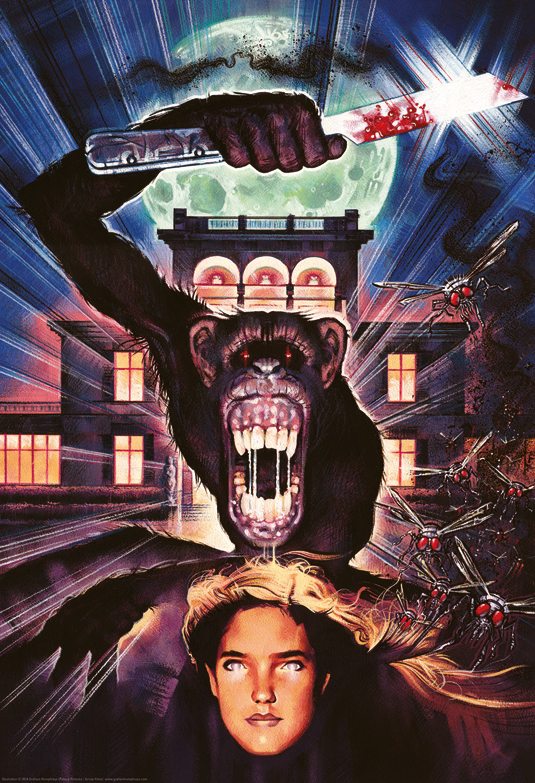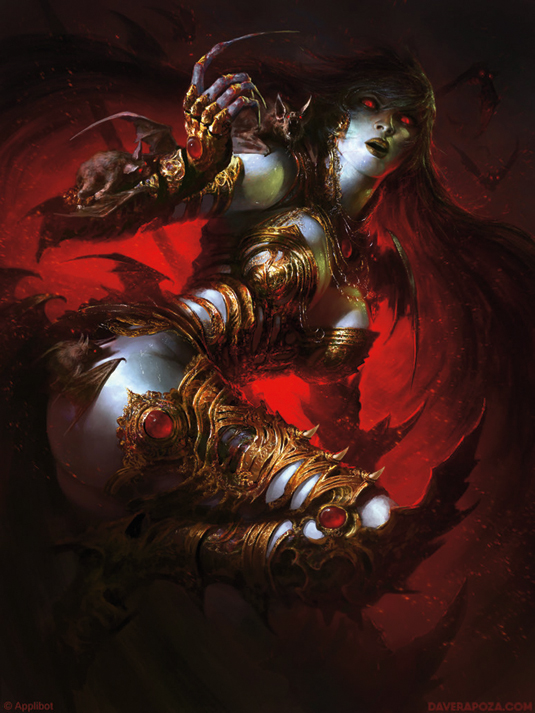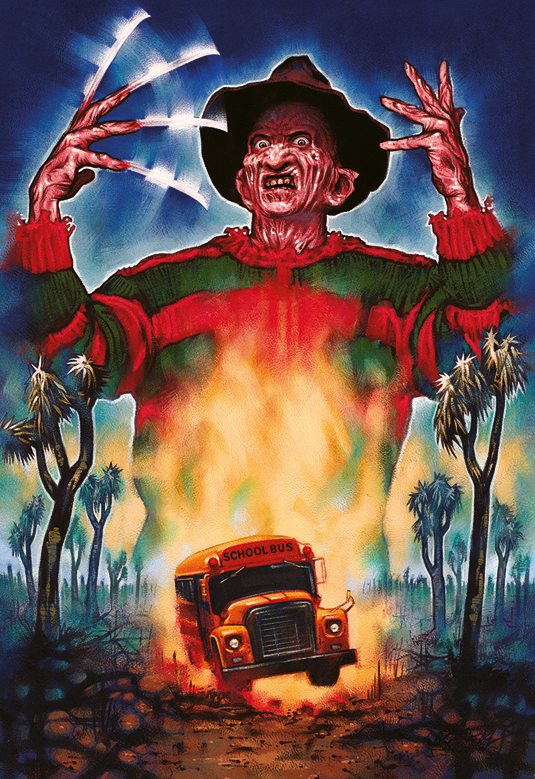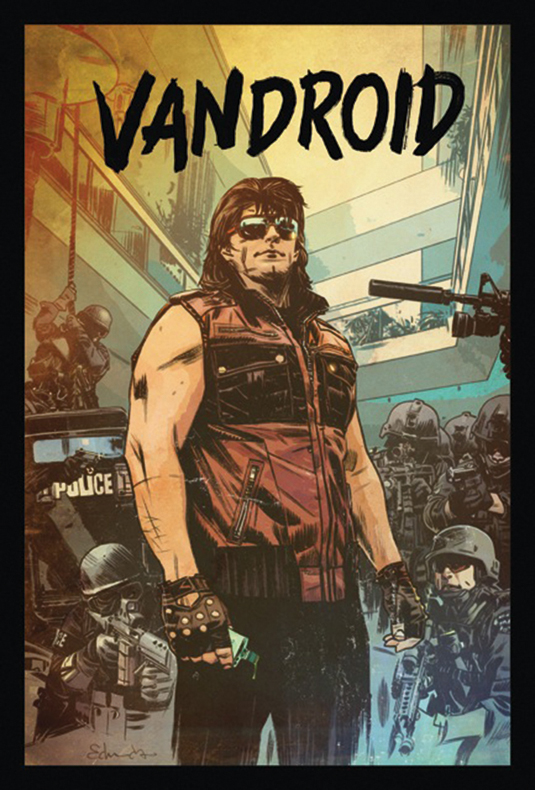The B-movie art that's so bad it's good
On the cheap and off the cuff: how low-budget horrors inspired a generation of artists.

B-movies were the training ground for movie men on both sides of the camera, and the artists who provided the promotional material. Up until the 1950s, major studios owned theatre chains and so set up specific B-units to create low-billing movies to maximise profits.
When studios were no longer allowed a monopoly on theatres, the B-units disappeared. The term B-movie began to be applied to any cheap, lo-fi film.
Dave Rapoza never actively aims for a B-movie poster feel in his work, but along with 90s video game advertising, he feels it's always subtly there.

"There's this one amazing scene in The Video Dead," says Dave, "where this zombie's head is coming up through a TV screen lying on the floor. There's mist everywhere and the light from the TV underlights him. This is what inspires me most about horror B-movies: the lighting effects, the hard saturated backlights."
If artists can learn anything from 80s B-movie art, Dave says, it's that art can have an element of irreverence to it.
Horror movie posters look like people had a lot of fun designing them. I think that style is due a comeback
"There's something about it just accepting how dumb the idea is, but taking it so seriously with the rendered artwork. The hand-painted horror movie posters really pull me in: simple, direct concepts that reminded me of comic covers. They all look like people had a lot of fun designing them. I think that style is due a comeback."
Underground following
B-movies in the 50s were concerned with alien invasions and atomic bombs. The 60s looked to the moon. The 70s offered up exploitation films – Blaxploitation (initially targeting an African-American audience) and ruceploitation (starring Bruce Lee look-alike actors) were among its subgenres.
Daily design news, reviews, how-tos and more, as picked by the editors.
In the 80s, production costs rose for bigger films, making it harder for B-movies to reach the big screen. But VHS helped secure a cult, almost underground, following. And B-movies made at this time seemed to revel in their new status.

Vandroid is a legend in B-movie circles earning cult status as the greatest film that never was. In 1984, Palm Springs Entertainment studios burned to the ground, taking with it any chance of its release.
That was until artist Tommy Lee Edwards helped it rise from the ashes. He has created a Dark Horse comic-book series based on the original screenplay.
For Tommy, B-movie artwork was often better than the movies themselves and they do a better job of selling the film than most big-budget studio posters.

The illustrations often attempted to give a taste of the story – something, along with an innate sense of child-like wonder, that's absent from today's promo material.
"The posters typically have that little something that doesn't quite fit," says Tommy, "a weird mix of genres. A barbarian in outer space, or the hero's giant hand on the Low Blow poster. There's often fun sex appeal, too, such as Bob McGinnis' Barbarella poster.
No idea is too silly and you don't have to please anybody but yourself. That's the spirit of B-movies
"I continue to surround myself with that stuff because it's a constant source of inspiration that keeps me close to my childhood roots.
"To make comics, animated films and write stories, I have to remember being a kid. You've got an uninhibited creativity as a kid. No idea is too silly and you don't have to please anybody but yourself. That's the spirit of B-movies."
Like this? Read these!
- The secrets to becoming a successful street artist
- Make 3D prints using your own photos for free
- The art book that gives artists a piece of the pie

The Creative Bloq team is made up of a group of art and design enthusiasts, and has changed and evolved since Creative Bloq began back in 2012. The current website team consists of eight full-time members of staff: Editor Georgia Coggan, Deputy Editor Rosie Hilder, Ecommerce Editor Beren Neale, Senior News Editor Daniel Piper, Editor, Digital Art and 3D Ian Dean, Tech Reviews Editor Erlingur Einarsson, Ecommerce Writer Beth Nicholls and Staff Writer Natalie Fear, as well as a roster of freelancers from around the world. The ImagineFX magazine team also pitch in, ensuring that content from leading digital art publication ImagineFX is represented on Creative Bloq.
